Twenty miles west of Boston sits Lincoln, Massachusetts, a colonial-era town with a zeal for modern architecture. Mid-century residences populate Lincoln’s pastoral fields and showcase concepts synonymous with modern architecture, such as large areas of glass with built-in shading devices, a choreographed connection with nature, and asymmetrical pitched roofs. These ideas feature prominently in the complex renovation undertaken by the firms of Cambridge-based SMMA and the Philadelphia office of EwingCole for the Lincoln School, which was completed in September 2022.

Fixed external shade devises draw on Lincoln’s rich history of modern architecture, reference the original 1948 school building, and help unify the building’s exterior. Photo © Raj Das Photography, click to enlarge.
The Lincoln School project posed multiple and potentially conflicting challenges. The design team was asked to unite four pre-existing buildings—a 1948 elementary school, a 1963 middle school, a 1970s detached gymnasium, and a connective library space from 1994—into a single, cohesive structure to serve as a 21st-century learning environment for 700 pre-K to 8 students and a community center for events and town meetings. Furthermore, the architecturally conscious Lincoln community sought to preserve the 1948 and 1963 buildings and honor the modernist character of the original architecture; yet they also wanted an all-electric, net-zero facility. The project footprint was also restricted to an L-shaped area to maintain a former semi-pro ballfield on the site.
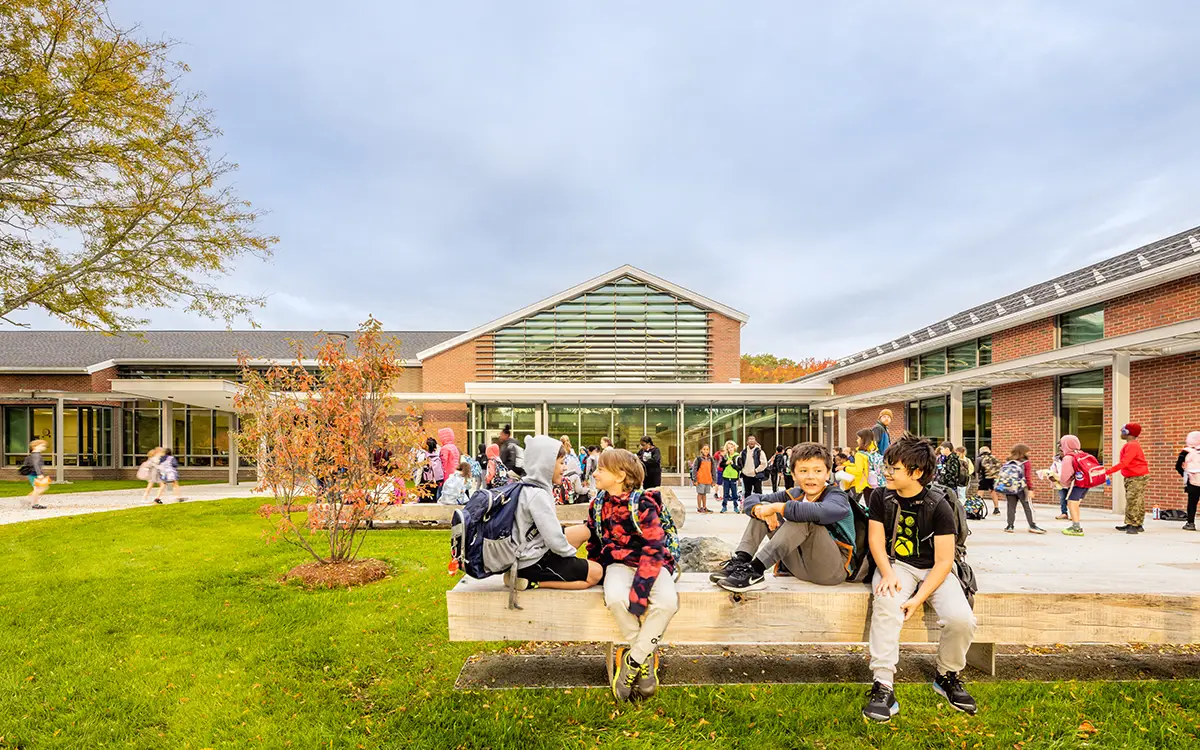
The front plaza contains benches cut from a tree felled during renovation work, while boulders that support the bench slabs come from other areas of town. Photo © Raj Das Photography
“The biggest challenge for me on this particular project,” says Jennifer Soucy, senior associate and project architect at SMMA, “was the complexity of the project itself . . . trying to incorporate the net-zero elements in all of the new MEP systems and weave it into an existing building, [all while] trying to maintain the historic and modern details and elements.” Buckner Creel, former Administrator for Business and Finance for Lincoln Public Schools, noted that SMMA’s stature as an integrated architecture and engineering firm was one of the reasons that they were selected to partner with EwingCole, who had previously worked with the school district. “We knew that this project was going to require a lot of serious engineering,” says Creel. “And it did.”
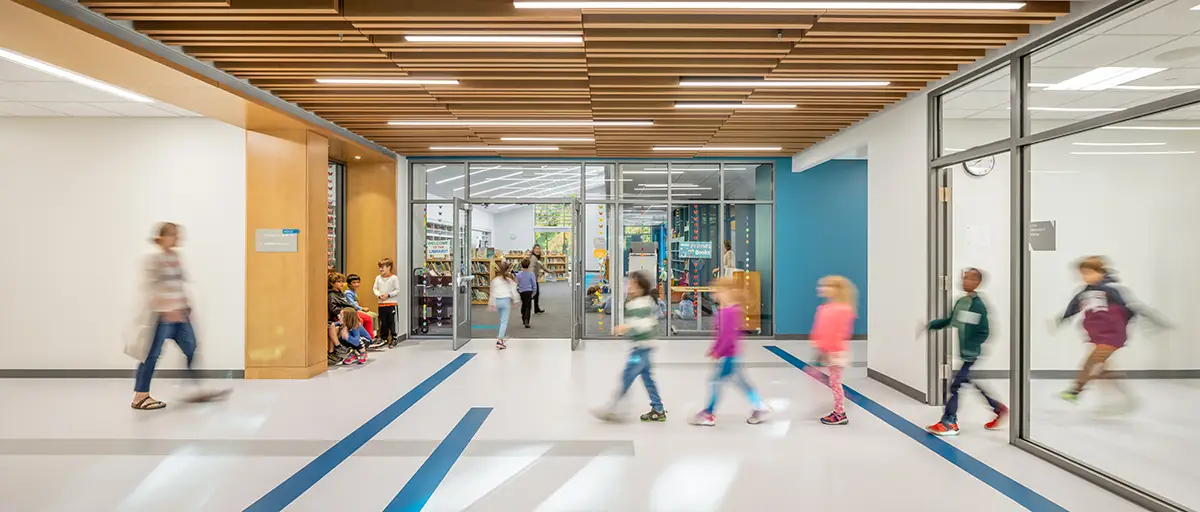
The main entrance hallway at the Lincoln School. Photo © Raj Das Photography
To create one building from the component parts, the designers fashioned a connective “heart of the building,” says Soucy of a new space containing the main entrance, administrative offices, media center, dining area, and a learning commons—a flexible, multipurpose area used by the school and the community. Golden-hued wood paneling and wood-look metal ceilings provide warmth in the vaulted space and reference similar-toned elements found throughout the school, whether as custom-milled benches and ceiling slats in the hallways, or the salvaged exposed beams in select classrooms. These timber components complement an interior color palette of creams and grays, further animated by pops of blue and yellow. Clerestory windows admit diffuse northern light, while glass walls to the east and west dematerialize the line between inside and out.
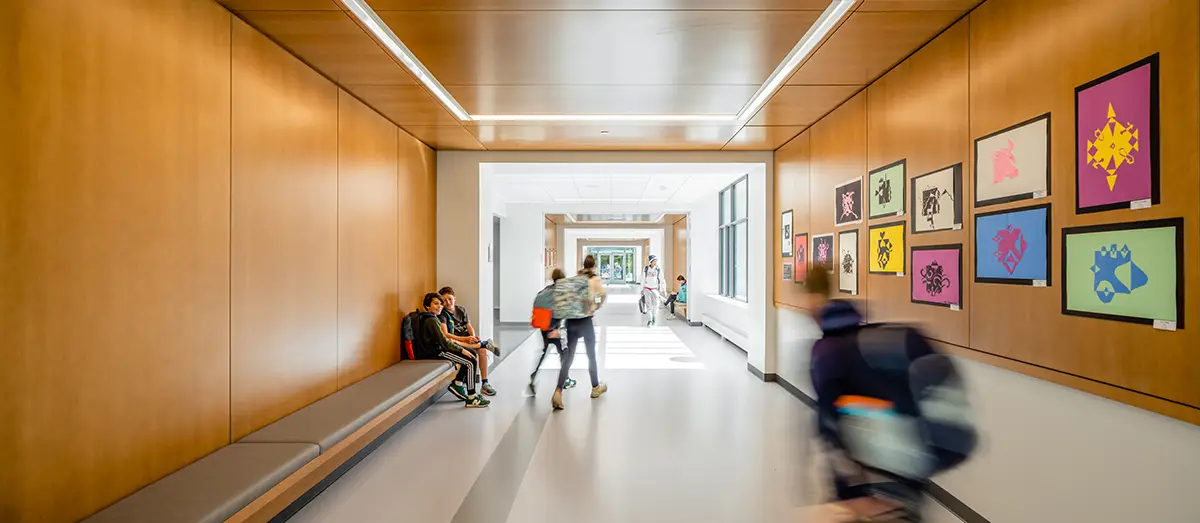
Interior view showing milled wooden benches and widened hallways. Photo © Raj Das Photography
Aside from welcoming daylight into the building and establishing a relationship with the outdoors, glass figures prominently in the Lincoln School, facilitating visual connection throughout the building. In the grade-based learning hubs, which replace the older corridor layout for third through eighth grades, folding glass walls and moveable furniture permit variable spatial configurations and instructional approaches.
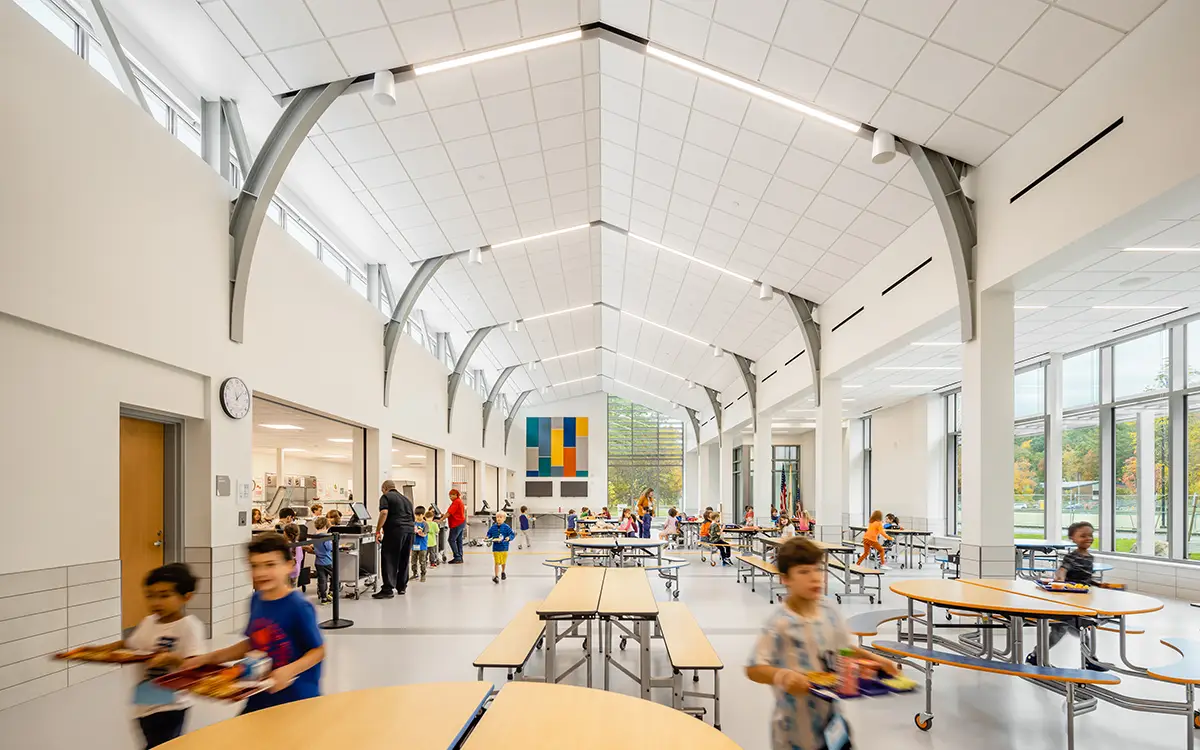
View into Dining Commons, a space added in 1994 that previously served as a library. The curved trusses are holdovers from that space. Before the renovation, students ate lunch in the gyms. Photo © Raj Das Photography
To create a cohesive exterior for the Lincoln School, the architects drew inspiration from the existing architecture, primarily the 1948 building with its brick facades and asymmetrical pitched roofs. They stripped the exteriors of the four existing buildings, added 8 inches of insulation, and sheathed the entirety in red and brown brick, thereby unifying the school’s appearance while shoring up its thermal envelope. The incorporation of new HVAC systems, triple-pane glazing with fiberglass frames, external shading devices, and photovoltaic panels rendered the project as what SMMA believes to be the first net-zero school renovation in Massachusetts. (Per SMMA sustainability director Martine Dion, the net-zero energy status is currently being verified as part of a post-occupancy evaluation conducted by the firm for the Eversource Post-Verification Incentives Program.)
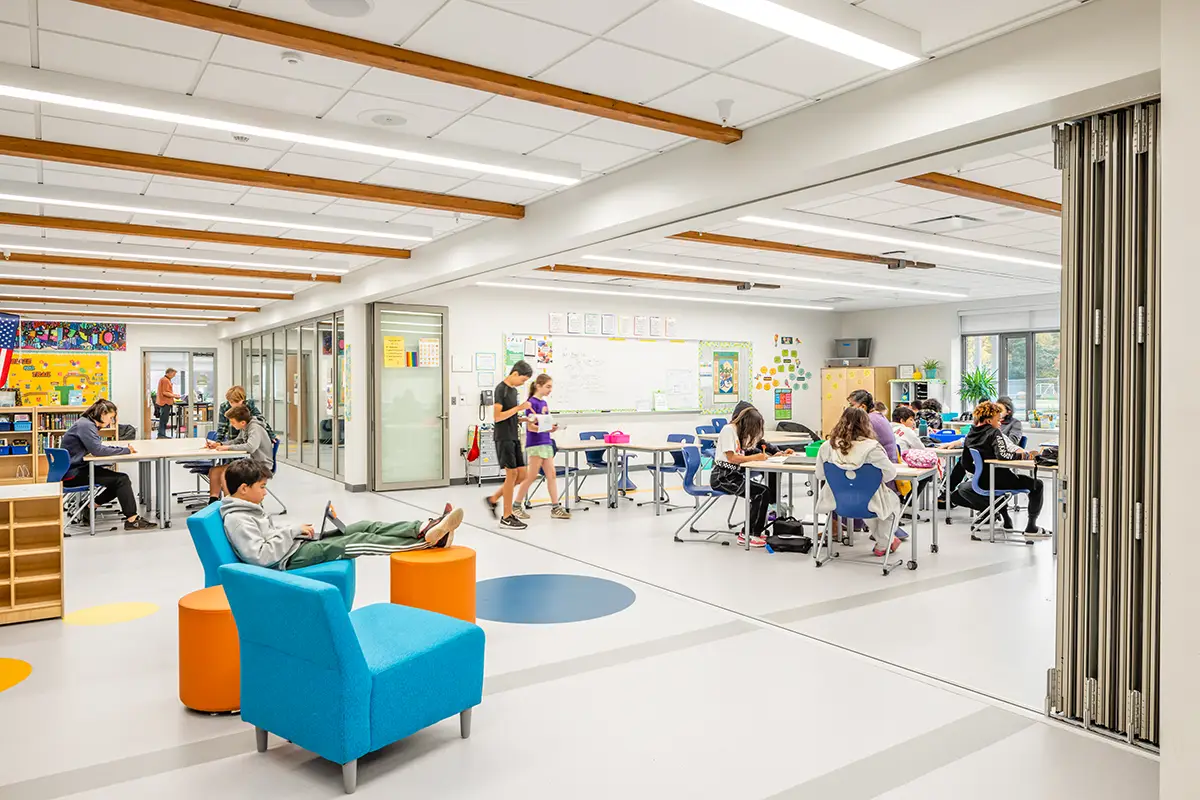
1

2
View into a learning hub (1 & 2), showing the common space and adjacent classrooms with folding glass walls. The wooden beams are remnants of the 1963 middle school building. Photos © Raj Das Photography
School staff spent the initial academic year finetuning operations for optimal energy performance and will keep monitoring to ensure that the now-unified 165,000-square-foot building functions as intended. Meanwhile, lower school principal Sarah Collmer envisions the building’s evolution in the hands of students, teachers, and the community. In the coming years, says Collmer, “it will be exciting to see what new life comes into the building as it becomes more and more used.”
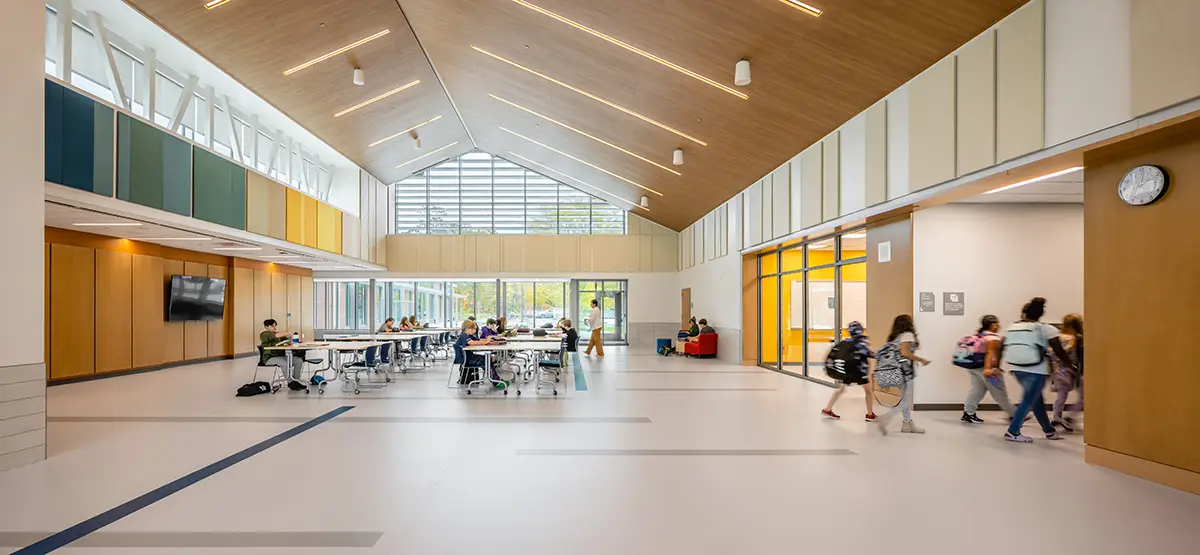
View of the Learning Commons, showing warm wood detailing and wood-look metal ceiling, north-facing clerestory windows, and fixed sunshades on east facade. Photo © Raj Das Photography
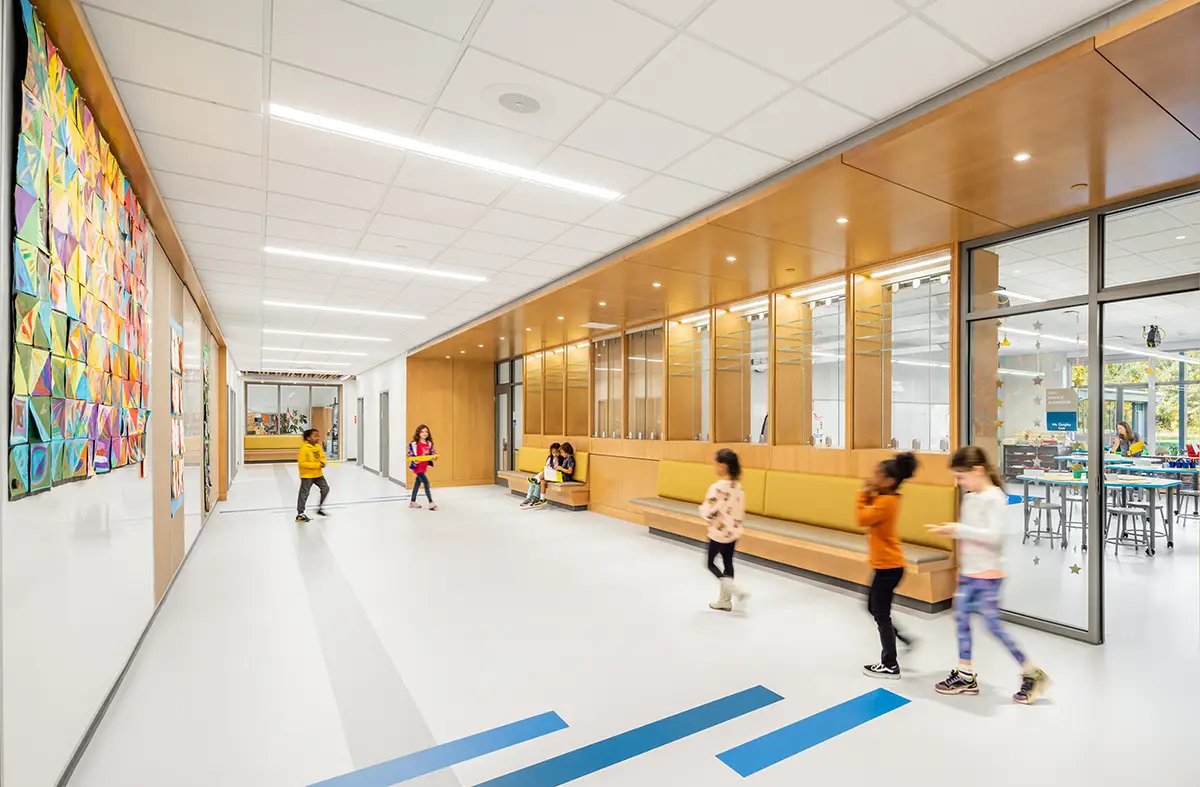
The school’s expanded hallways demonstrate transparency within the school. Photo © Raj Das Photography
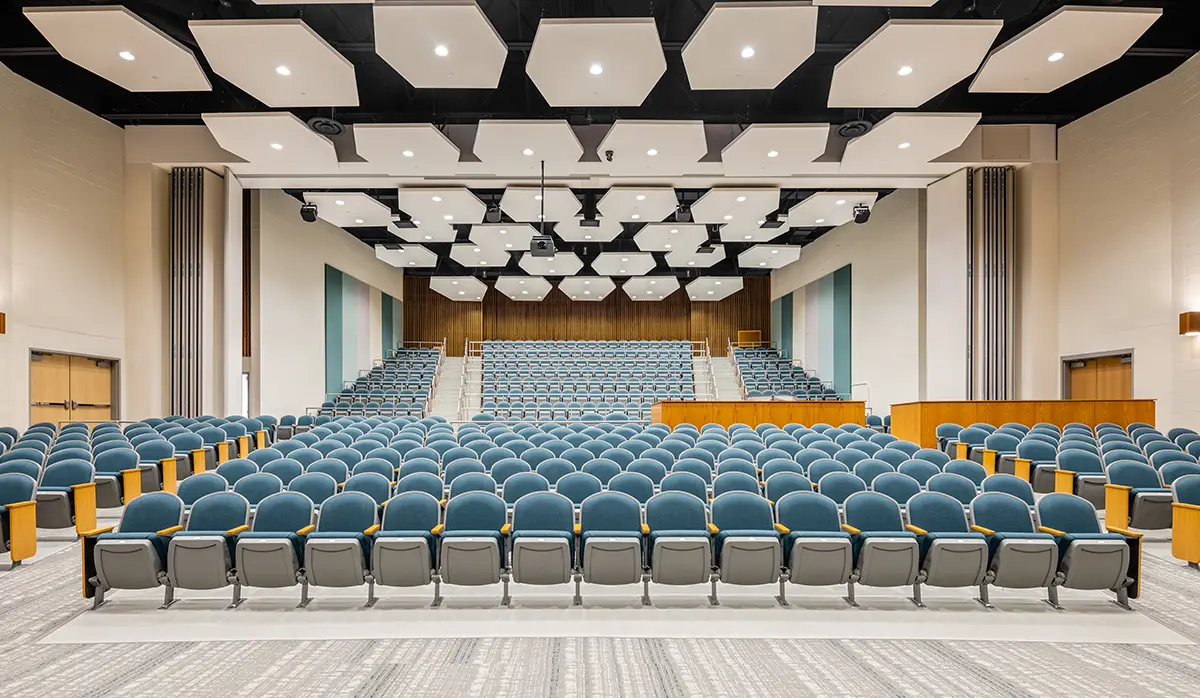
The auditorium, originally constructed in 1963, was refreshed with new finishes and technology. Photo © Raj Das Photography
Click plan to enlarge. Image © SMMA
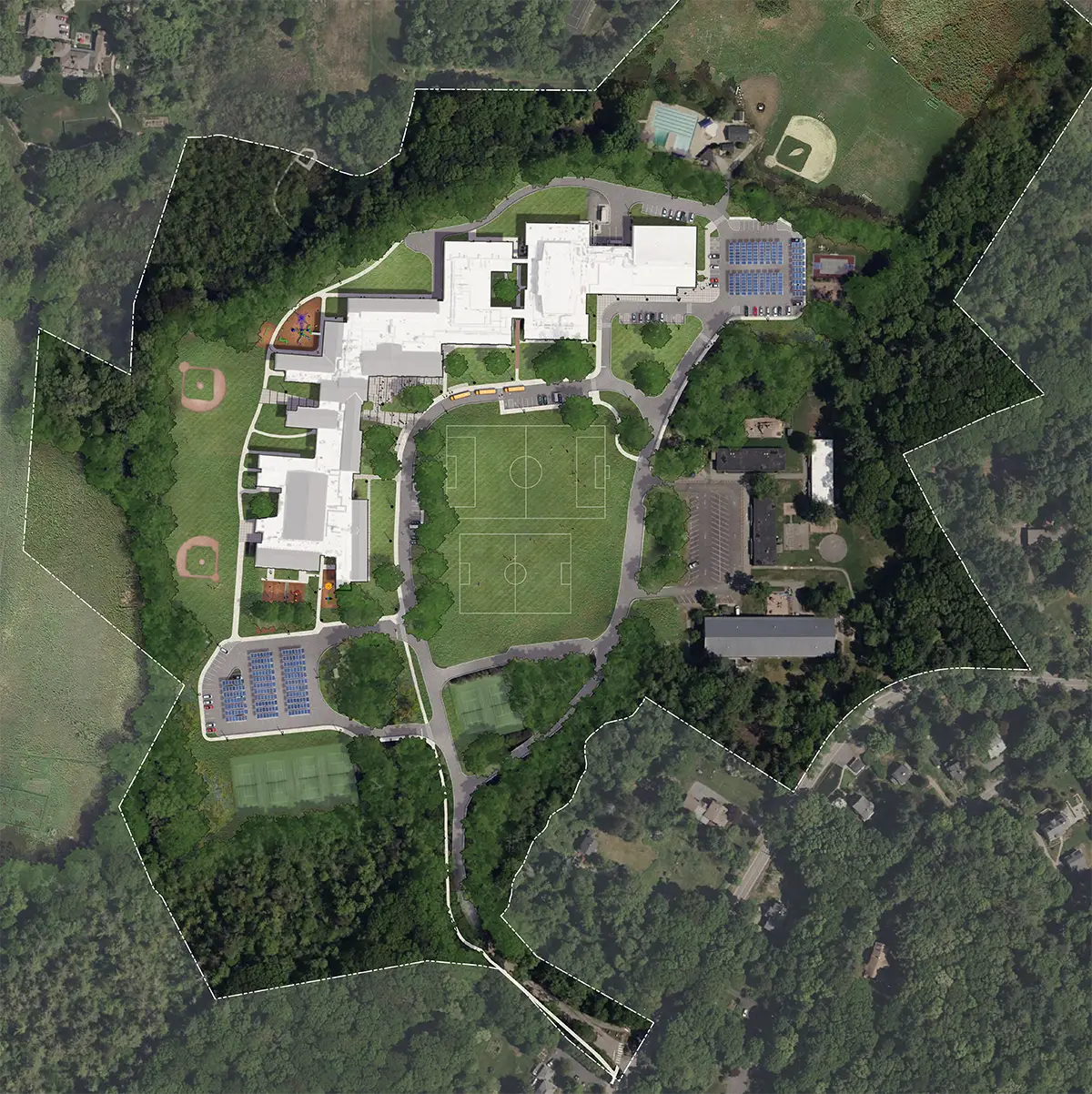
Read about other K-12 projects from our August 2023 series.
CREDITS
Location: Lincoln, Massachusetts
Completion Date: September 2022
Gross Square Footage: 165,289 square feet
Total Project Cost: $96.3 million
Total Construction Cost: $84.1 million
Client: Lincoln Public Schools
Owner: Town of Lincoln
Architect/Architect of Record:
SMMA
1000 Massachusetts Avenue
Cambridge, MA 02138
617-547-5400
www.smma.com
Personnel in architect's firm who should receive special credit:
Joel Seeley, AIA (Project Manager); Alex Pitkin, AIA (Principal); Jennifer Soucy, AIA (Project Architect), Martine Dion, FAIA (Director of Sustainability); Keith Fallon, AIA (Ewing Cole)
Associate architect:
Ewing Cole
100 N. 6th Street
Philidelphia, PA 19106
215-923-2020
www.ewingcole.com
Interior designer:
SMMA
Engineers:
Mechanical: SMMA
Electrical: SMMA
Plumbing/Fire Protection: SMMA
Structural: SMMA
Civil/Landscape: SMMA
Consultants:
Audio Visual: Acentech
Theater Design: Theater Design Inc.
Food Service Design: Lisa C May Foodservice Design
Code Consultant: Jensen Hughes
Haz Mat: CDW Consultants, Inc.
Commissioning: BR+A
Building Envelope Commissioning: Simpson Gumpertz & Heger
Geotechnical: Lahlaf Geotechnical Consulting, Inc.
Environmental: ADS Environmental Engineering LLC
Hardware: Robbie McCabe Consulting
General contractor:
Consigli Construction Co.
Photographer:
Raj Das Photography
SPECIFICATIONS
Exterior Cladding
Masonry: Glen Gery, Tayler Clay Products, Acme Brick Company, Jandris
Metal panels: Morin Corporation
Metal/glass curtain wall: FreMarq Innovations
EIFS, ACM, or other: Sto Corp.
Moisture barrier: GCP Applied Technologies Inc.
Curtain wall: FreMarq Innovations
Roofing
Built-up roofing: Sika Sarnafil
Tile/shingles: CertainTeed
Windows
Fiberglass Windows: Inline Fiberglass
Glazing
Glass: Solarban Glass, Alpen High Performance Products
Skylights: Wasco, part of Velux Commercial
Translucent Fiberglass Sandwich Panels: Kalwall
Doors
Entrances: Kawneer
Metal Doors: Curries Co.
Wood Doors: VT Industries Inc.
Fiberglass Doors: Special-Lite
Fire-Control Doors, security grilles: Overhead Door
Folding Glass Walls: Solar Innovations
Operable Panel Partitions: Moderco
Hardware
Locksets: Sargent
Closers: Sargent
Exit Devices: Sargent
Pulls: Rockwood
Interior Finishes
Acoustical Ceilings: USG
Suspension Grid: USG
Cabinetwork and Custom Woodwork: Polybois Inc.
Paints and Stains: Sherwin Williams
Paneling: Polybois Inc.
Plastic Laminate: Formica
Solid Surfacing: Wilsonart
Floor and Wall Tile: Daltile, Creative Materials Corp.
Resilient Flooring: Forbo, Mondo
Carpet: Tarkett, Tandus
Wood-Look Metal Ceilings: USG
Furnishings
Office Furniture: HON
Reception Furniture: HON
Fixed Deating: Irwin Seating Company
Chairs: VS America, HON
Tables/Desks: Smith Systems, VS America, Cascade
Cafeteria Furniture: SICO
Soft Seating: HON, FOMCORE
Library Shelving: Media Tech
Music Storage: Wenger
OT/PT Furniture: Southpaw
Preschool Furniture: JontiCraft
Lighting
Interior Ambient Lighting: Finelite, H.E Williams, Meteor Lighting, Birchwood Lighting
Downlights: Intense Lighting
Tasklighting: Finelite, Intense Lighting, Targetti USA
Exterior: Cree Lighting, Bega
Dimming System or Other Lighting Controls: Lutron
Plumbing
Commercial Sinks: Elkay
Lavatories: Bradley
Water Closets: American Standard
Electric Water Cooler: Oasis
Energy
Energy Management or Building Automation System: Johnson Controls
Photovoltaic System: SunPower
Air Sourced Heat Pumps (VRFs): Mitsibishi
Energy Recovery Units: AnnexAir

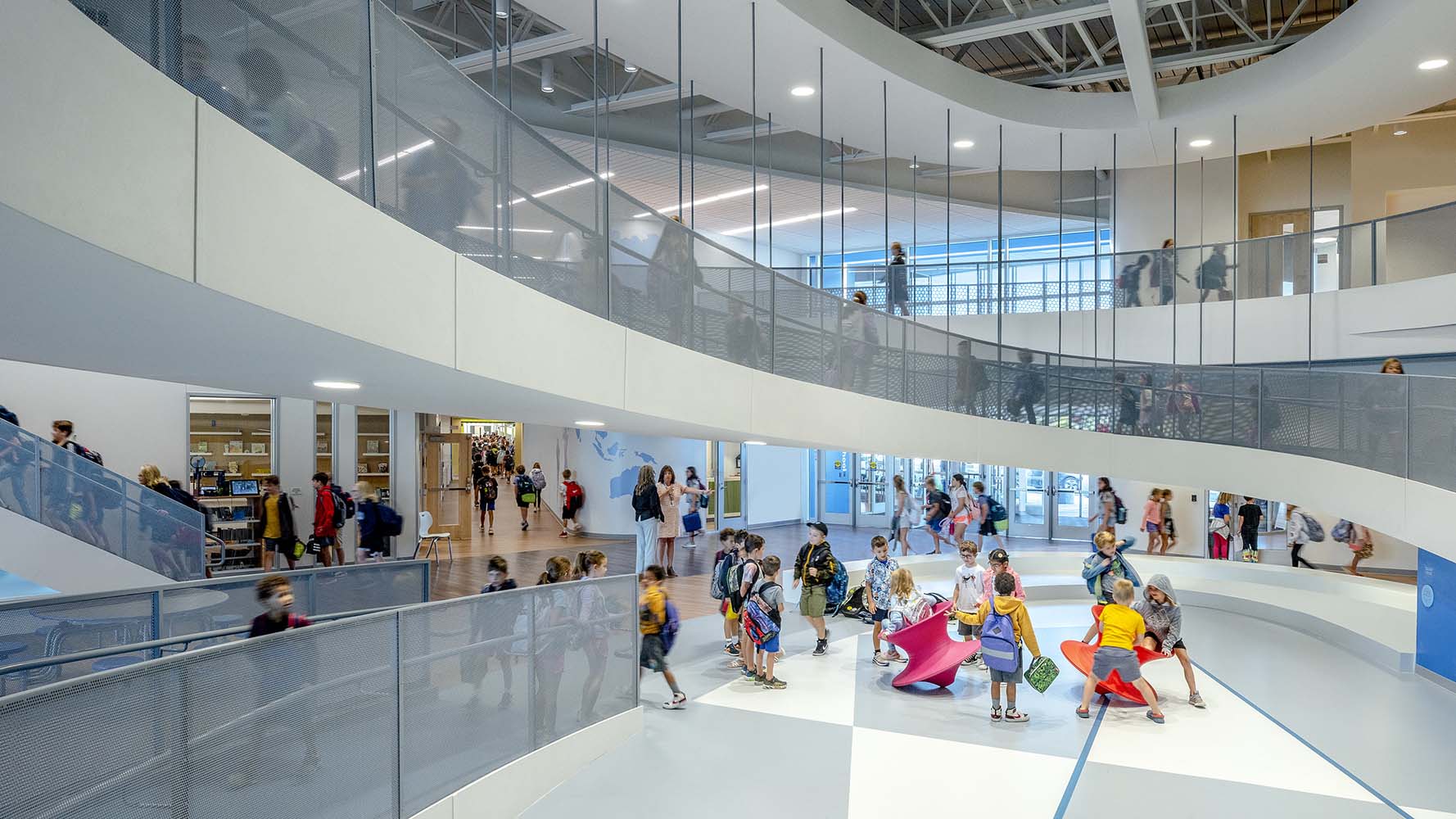
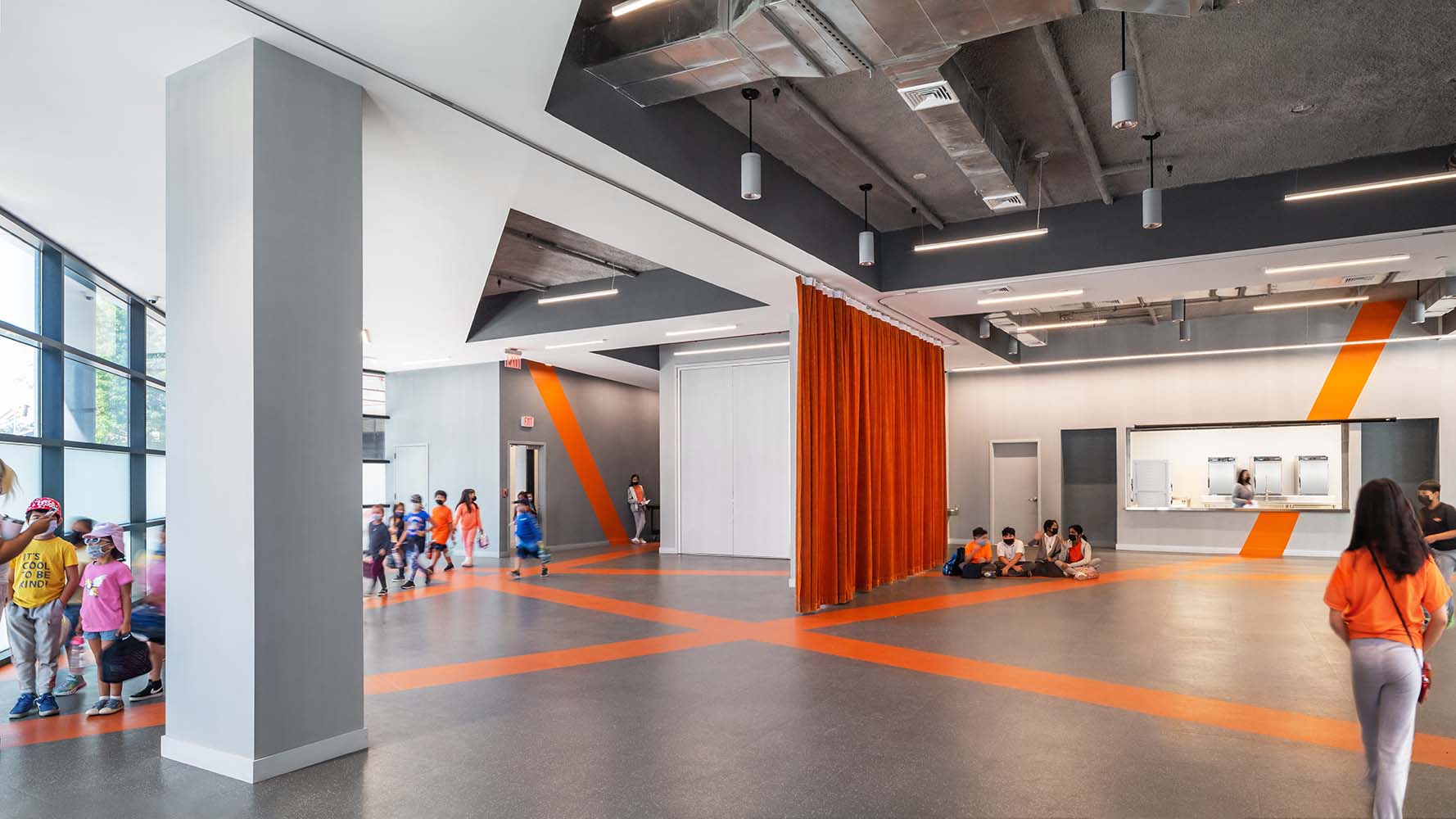
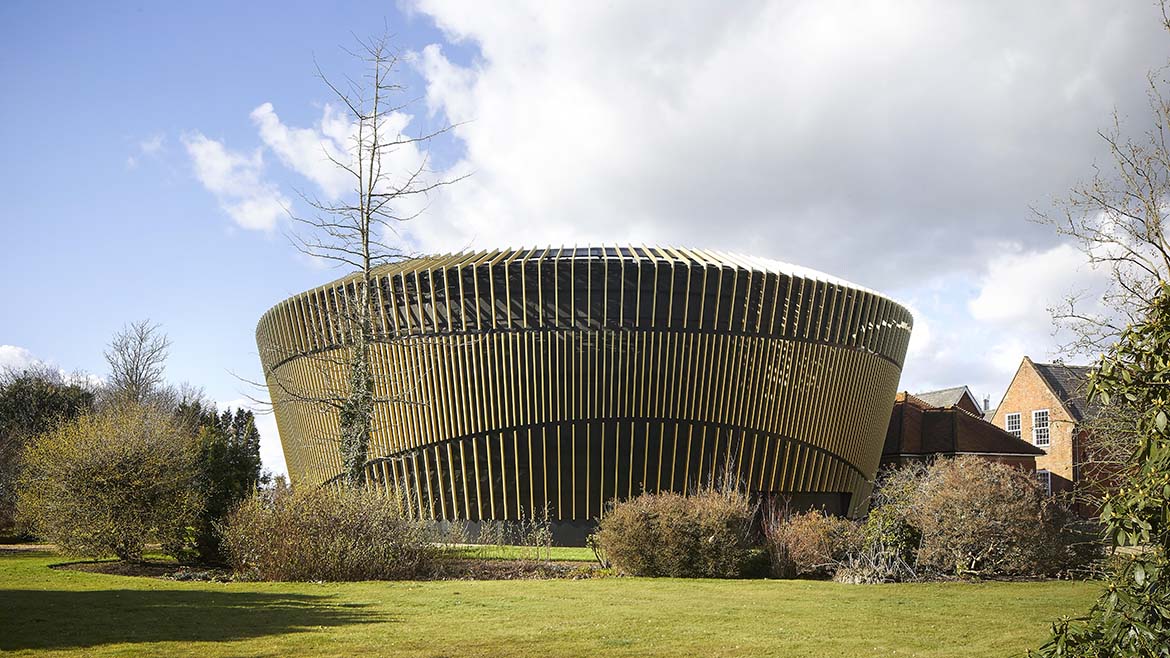

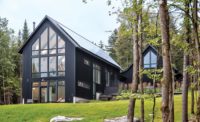
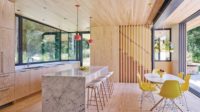
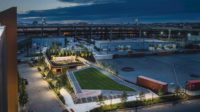
Post a comment to this article
Report Abusive Comment